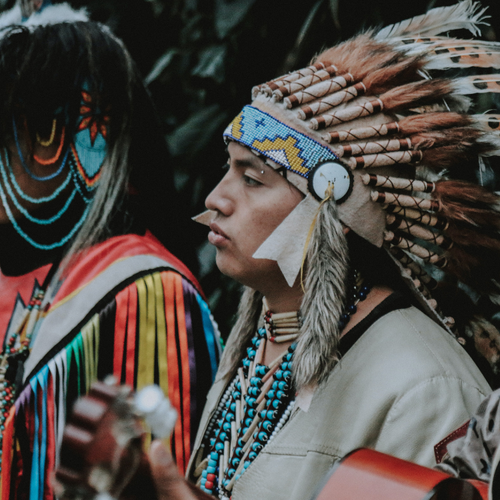For centuries, Native American healing has been practiced in North America. It encompasses a number of beliefs and rituals used by the more than 500 tribes of North America to treat people with emotional or physical conditions. As a medical doctor and Native American healer, I find that people often benefit from complementary care that includes these traditional practices.
Because Native American healing is so embedded in the tribal culture, it's not something an individual can dabble in on her own. However, it does include a spiritual element from which you can gain insights that promote well being plus healing practices you can do while honoring your own traditions.
A Spiritual Practice
The spirit plays an integral part in Native American healing, which is as much a philosophy as a science. Typically conventional Western medicine aims to fix the part of the body that ails. In contrast, Native American medicine considers the spirit inseparable from the healing process and seems to heal the whole person. There is no separation between the body parts and the person...the person and the community and the community and the natural environment.
Whereas Western medicine looks to eliminate the particular disease, Native American medicine asks "What can the disease teach the patient? The answers empower the patient with awareness, confidence and tools to help her take charge of her health.
Native Americans believe that many illnesses stem from spiritual problems. A person who thinks negatively, has an unhealthful lifestyle or has an imbalance of body, mind, spirit and community is more likely to become il Native American healing practices aim to reestablish balance and restore the patient to a healthy and spiritually pure state.
There is no scientific proof that Native Ameri can healing can cure disease. However, many people find that the practices reduce pain and stress, encourage emotional well-being and im prove quality of life.
The Ritual Retreat
The retreat is an essential element of Native American healing. It is vital to wellness to take time out for a periodic respite once a year at a minimum. A typical retreat takes place in a natural and safe environment, away from urban and residential areas. It consists of four days and nights of fasting, prayer and meditation.
Often a retreat begins and ends with a sweat lodge ceremony. This takes place in a dome shaped structure made from the beaches. Inside, water is periodically poured over heated rocks to create a hot steamy environment. The ceremony of the sweat lodge helps to purify the body’s blood, heart, lungs, liver and kidneys... free the mind of distractions and bring mental clarity and provide a sense of connection to the planet and the spirit world.
Though it's not possible to create the sweat lodge experience without being enmeshed in Native American culture, you can create your own personal retreat for a few hours or a few days.
- Go to a place where you feel safe, protected and connected to nature—to the open sky, towering trees, earth beneath you. This reduces stress and promotes relaxation.
- Fast. Most healthy people can safely go without eating or drinking for 24 hours. If you have any medical problems, you may need to shorten your fast or avoid fasting ask your doctor) Longer fasts, such as the traditional four-day fast, should be done only under the supervision of an experienced healer.
- Sit still and meditate for whatever amount of time feels right. Even a short period of meditation helps you understand that you don't really need to do all the things you normally worry about...puts you in touch with your spiritual side and helps you open up to whatever lesson muy come. Use any meditation techniques you want-deep breathing imagery, mantas, prayer.
The science: From the viewpoint of Western medicine, fasting and meditating can decrease the activity of the sympathetic nervous system (which controls the fight-or-flight response and production of stress hormones, among other functions and increase the activity of the parasympathetic nervous system which controls the body's rest and repose" functions The result is deep relaxation, which gives the body an opportunity to repair itself, reduce anxiety and alleviate depression.
The tradition: Nearly every culture has methods of reflection, renewal and rejuvenation. There is benefit in engaging in rituals that have been handed down for thousands of years. Honoring such traditions can provide a healing sense of connectedness, well-being and peace.
